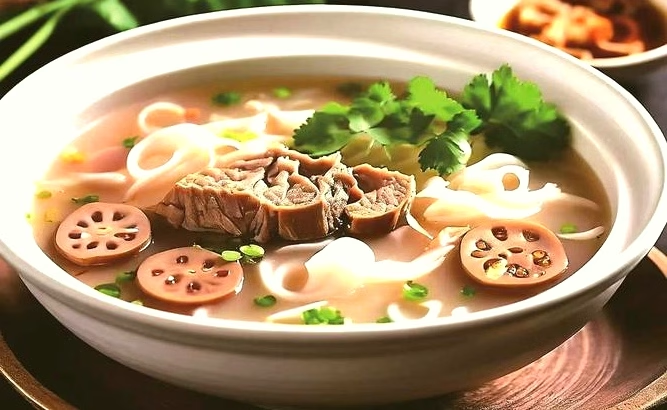Lotus root is the underground stem of the lotus flower. The lotus is a fascinating plant. Its flowers bloom in the summer, and after the flowers fade, the seeds inside the pods are edible. Harvested underground lotus roots offer nourishing benefits for autumn and winter.
Lotus root soup can be transformed into a lotus root dish, and lotus root can also be made into lotus root powder, which can be brewed into drinks and dishes. To choose a good lotus root, start by judging its plumpness.
Lotus roots have holes for breathing?
Lotus roots have a unique shape, being long and segmented. Cutting open a lotus root reveals a distinctive pattern of holes. Why do lotus roots have holes?
It’s actually for survival. As underground stems, lotus roots grow in soil and water, requiring their leaves to breathe. The holes in the underground stems allow air to pass through and circulate.
What are the benefits of lotus root powder?
Boiled lotus root, which is soft and fluffy, can be sliced thinly to make crispy cold lotus root chips. Lotus root is a great addition to any dish. Lotus root contains minerals such as potassium, phosphorus, and iron, as well as vitamin C, dietary fiber, and tannins.
In terms of its properties, eating lotus root raw or cooked can have different effects. Lotus root has a cooling effect, so eating it raw can help clear heat. However, boiling lotus root in lotus root soup or stir-frying it, when heated, has a warming effect, making it suitable for general consumption.
Lotus root can also be made into lotus root powder. The root is ground into a paste, washed, the starch precipitated, and filtered, then dried and ground into flakes. Observe the lotus root powder, which appears flake-like rather than powdery. During the hot summer and autumn, a bowl of lotus root powder can help reduce internal heat and relieve heat.
Lotus root powder is off-white in color and has a light fragrance. It takes on a slightly pink hue after brewing. Lotus root powder can also be easily disguised as starch, so be careful when choosing.
How to Choose Lotus Root: Plump, Consistently sized Lotus Root
Lotus roots come in two varieties: pink and white. When selecting lotus roots, consider those that are intact, plump, and uniformly sized. Paying attention to any unusual odors or color will help you choose the best lotus root.
Once lotus root has been washed or cut, it’s best to consume it as soon as possible. After purchasing, wrap the whole root in white newspaper and refrigerate it. If you’ve washed or cut it, cover the cut surface with plastic wrap or paper towels to prevent the polyphenols in the lotus root from oxidizing with air and turning it dark.


Leave a Reply